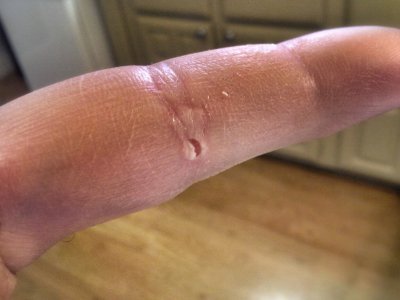i have used the foaming gorilla glue for a few years to seal cuts and cracks in my hands and my feet. you can smear it on the crack or even an open cut, and as its drying, use a wet finger to push down on the expanding foam.
if you wipe your finger with a paper towel or tissue, before it starts to set, it comes right off. it looks kinda funny but it sure stops the "ouch" from the cracks and it stays on for a couple days, and the crack is usually pretty well healed by then. i showed this to a well drilling friend whose hands were so badly cracked they were bleeding and it made him smile.
i store my bottle in an toilet paper cardboard roll with a bit of paper still around it for added strength, upside down with a small wad of paper in the bottom of the roll to catch any seepage that may occur. I'm still using one that i opened last fall. . . i made a "sanding board" by gluing some cloth back 120 grit sandpaper on a wood paint stirring stick.
one of the ER Doctors said the stuff they use to hold skin together thats in places where stiches would not be desired is basically gorilla glue and super glue mixed together. hard to argue with something that actually functions. . .



